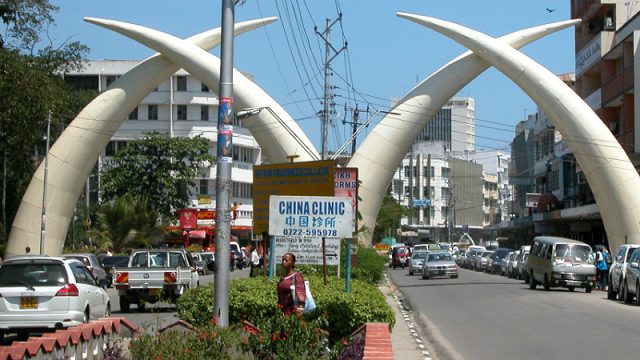There is so much worth knowing about this coastal Kenyan city: the origins of its rich, diverse cultural life; the stories behind its numerous monuments and historical sites; and of course, why those tusks are sitting in the middle of the road! Here are 10 things you didn’t know about Mombasa, Kenya.
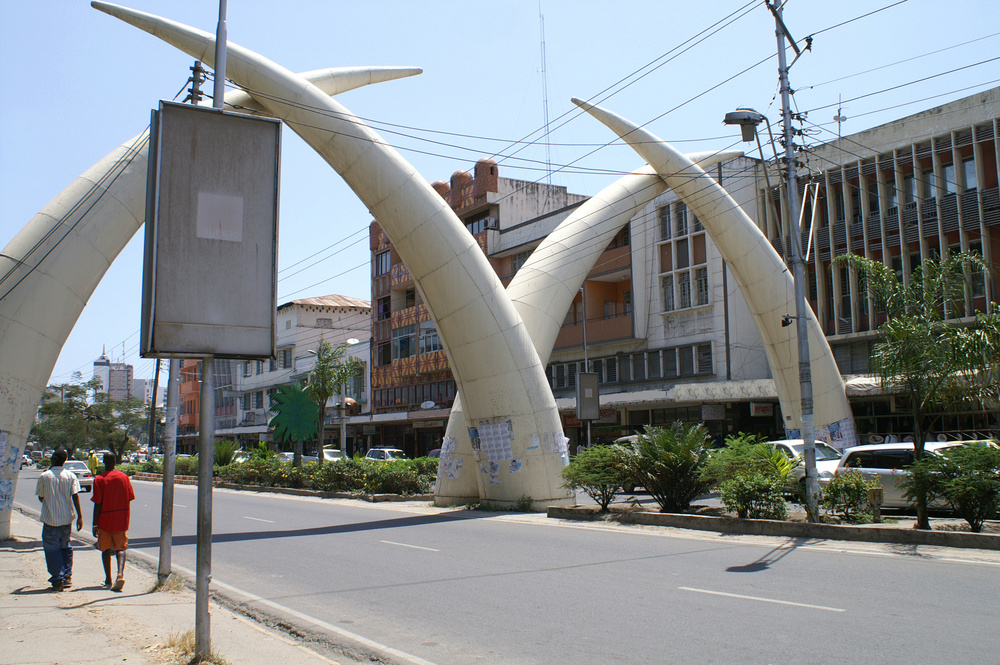
Shutterstock
The famous tusks were built for Princess Margaret of England
Mombasa is well-known in photos for its giant aluminum elephant tusks that span across busy Moi Avenue. However, these tusks weren’t just for decoration. They were built to commemorate the visit of Princess Margaret in 1956, back when Kenya was part of the British Empire.
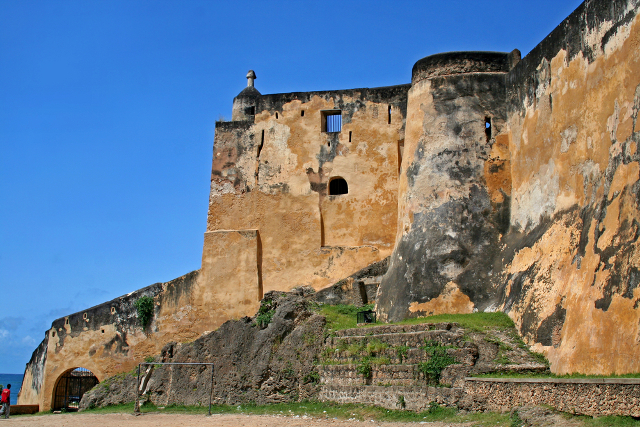
Fort Jesus (Shutterstock)
Fort Jesus has been won and lost nine times
You can be sure that any fort built in the 16th century has seen its share of battles. Fort Jesus was a critical player in nine different battles between nations that wanted control of the Kenyan coast, including Portugal, England and Oman. (Those years of turmoil earned Mombasa the nickname “island of war.”) The fort was made a UNESCO World Heritage site in 2011 and serves as a museum today.

Shutterstock
The founding date of the city is unknown
According to Kenyan school books, Old Town Mombasa was populated all the way back in the 10th century. Arab scholars mentioned the city multiple times in texts that have been found from the 12th-14th centuries as well. Regardless of when it was founded, Mombasa is definitely one of the oldest places in sub-Saharan Africa.
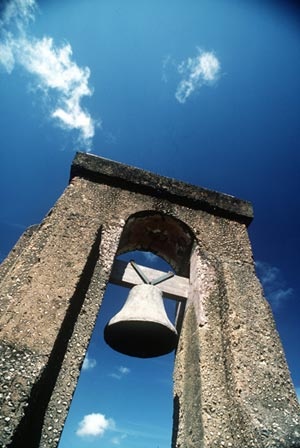
Courtesy of Suzi Robinson / flickr
It was unfortunately part of the slave trade
Throughout much of its history, the city served as one of the prime ports for the slave trade. This thrived for a long time and slowly came to an end midway through the 19th century. You can still see remnants of the trade throughout the city in the form of shackles. There’s also a bell that remains standing which was used to warn locals of passing slave ships.
It was once the capital
Although Nairobi is the country’s modern-day capital, Mombasa once reigned supreme. Mombasa was the capital of the Protectorate of Kenya from 1887 to 1906. However, it was moved to Nairobi afterwards and has remained there ever since.
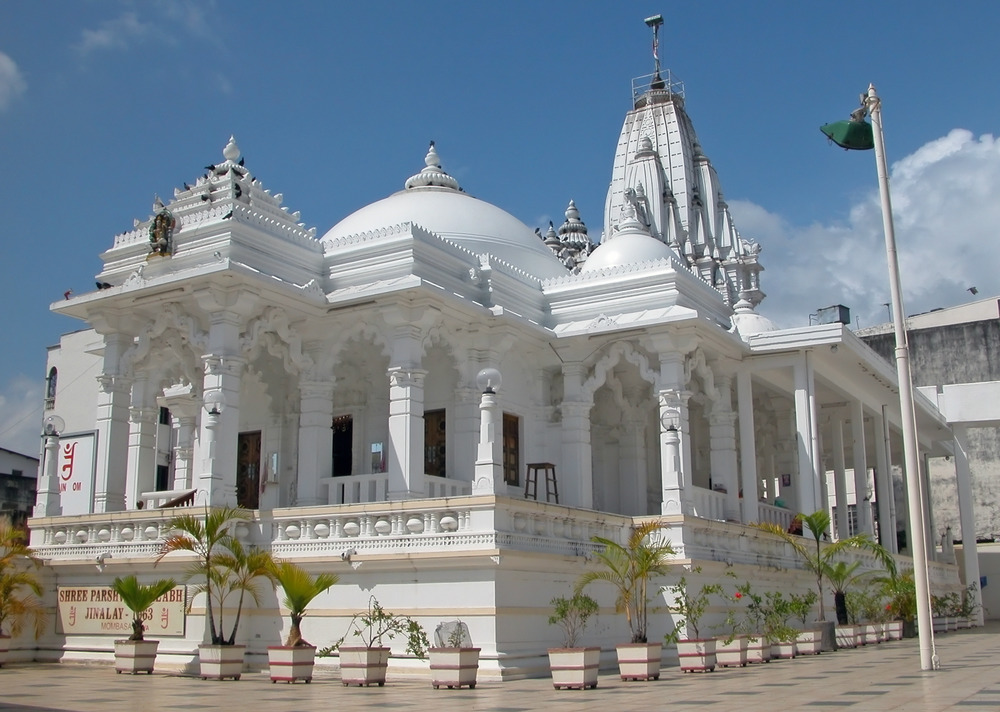
Shutterstock
It has one of the biggest Jain populations in Africa
While most of the population of Mombasa is Muslim, the city is also home to one of the largest Jain populations in Africa. The religion has been present in the country for around 100 years, and there is an elaborate temple in Mombasa — the first of its kind to be constructed outside of Asia.

Shutterstock
Vasco de Gama was the first European to see it
The famous Portuguese explorer, Vasco da Gama, was the first European to set eyes on Mombasa in 1848. Apparently, the Portuguese liked what they saw so much that they came back just two years later to sack the city.
It’s a big hub for music
Music is extremely important in daily life in Mombasa. The city is popular for the Bango, Chakacha and Mwanzele sounds. It’s also known for Taarab music (pictured above), which originated in nearby Zanzibar. You can find these sounds echoing throughout the city at night from its vibrant bars.

Shutterstock
It was an extremely important trading center
Mombasa was once one of the main centers for trading gold, ivory, coconuts, sesame and various spices. The trading activity in the city helped to link up Europe, India and China. Having so many goods coming through the area led to the city growing much of the goods on its own.

Courtesy of Wikimedia Commons
It was thrice ruled by Oman
Most people know about the city’s recent history as part of the British East Africa, along with its early history as part of Portugal, but its history as part of the Sultanate of Oman is often lost in the mix. In fact, Oman ruled the city three times between 1698-1728, 1729-1824, and again from 1826-1887.
Related content on AFKTravel:
#InLoveWithAfrica: Mombasa, In My Mind’s Eye
Photo Essay: A Memorable Journey Through Mombasa, Kenya
Exploring The Kenyan Coast: 15 Activities To Do In And Around Mombasa
Want to discover the finer side of Africa? Sign up for our weekly newsletter.
